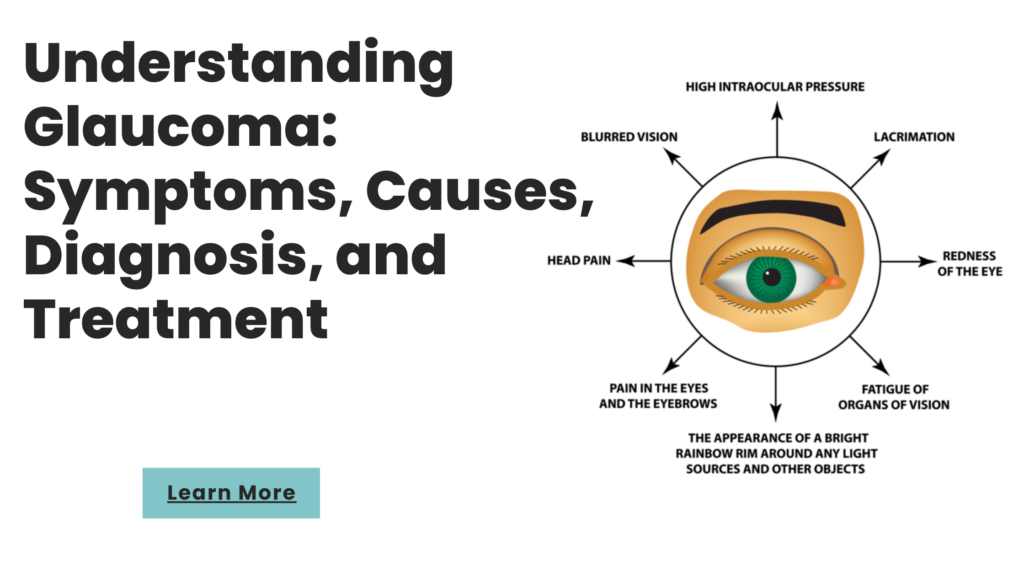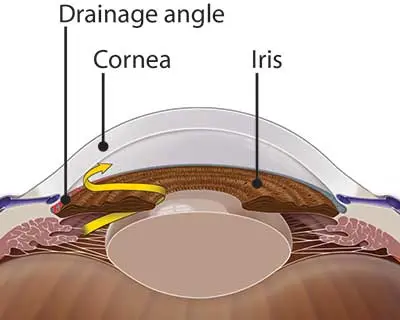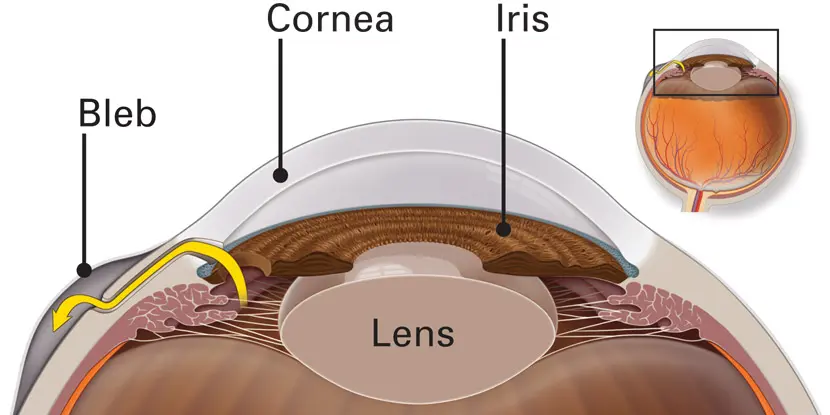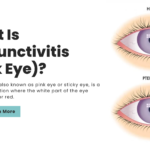
Understanding Glaucoma: Symptoms, Causes, Diagnosis, and Treatment
Glaucoma is one of the leading causes of blindness worldwide, particularly in individuals over the age of 60. However, with early detection and proper treatment, vision loss from glaucoma can often be prevented. This comprehensive guide will help you understand glaucoma, its symptoms, causes, diagnosis, and available treatment options.

What Is Glaucoma?
Glaucoma refers to a group of eye diseases that damage the optic nerve, often due to increased pressure inside the eye (intraocular pressure or IOP). The optic nerve is crucial for transmitting visual information from your eyes to your brain. Damage to this nerve can lead to vision loss and, in severe cases, complete blindness.
In a healthy eye, fluid (called aqueous humor) flows through a drainage system, maintaining stable eye pressure. When this drainage angle is blocked or impaired, fluid accumulates, increasing eye pressure and causing damage to the optic nerve.
Types of Glaucoma
1. Open-Angle Glaucoma
This is the most common form of glaucoma. It occurs gradually as the eye’s drainage system becomes less efficient, leading to increased eye pressure. Open-angle glaucoma develops without pain or noticeable vision changes in its early stages, earning it the nickname “the silent thief of sight.”
2. Angle-Closure Glaucoma
Also known as closed-angle or narrow-angle glaucoma, this occurs when the iris blocks the drainage angle, causing a rapid increase in eye pressure. Symptoms of an acute attack include severe eye pain, headache, nausea, vomiting, blurred vision, and halos around lights. This is a medical emergency and requires immediate treatment to prevent blindness.
3. Normal-Tension Glaucoma
This type of glaucoma occurs even when eye pressure is within normal ranges. It may be caused by poor blood flow to the optic nerve or heightened sensitivity of the nerve to pressure.
4. Pigmentary Glaucoma
This form arises when pigment granules from the iris clog the drainage system, leading to increased pressure. It often affects younger individuals and may be triggered by activities such as jogging or other high-impact exercises.
Symptoms of Glaucoma

Open-Angle Glaucoma Symptoms
- Gradual loss of peripheral (side) vision
- Blind spots that progress over time
Angle-Closure Glaucoma Symptoms
Halos or rainbow-colored rings around lights
Sudden onset of blurry vision
Severe eye pain
Headache
Nausea and vomiting
Normal-Tension Glaucoma Symptoms
- Blind spots in the field of vision
- Optic nerve damage despite normal eye pressure
Causes of Glaucoma
The primary cause of glaucoma is increased intraocular pressure, often due to improper drainage of aqueous humor. Other factors include:
- Genetics: Family history of glaucoma significantly increases risk.
- Age: People over 40 are at greater risk.
- Medical conditions: Diabetes, hypertension, and certain eye injuries can contribute to glaucoma.
- Long-term steroid use: Prolonged use of steroid medications can elevate eye pressure.
Who Is at Risk for Glaucoma?
Certain groups are more susceptible to glaucoma, including:
- Individuals over the age of 40
- Those with a family history of glaucoma
- People with diabetes, migraines, or high blood pressure
- Individuals of African, Hispanic, or Asian descent
- Patients with high eye pressure or thin corneas
Diagnosing Glaucoma
A comprehensive eye exam is the only definitive way to diagnose glaucoma. Common diagnostic procedures include:
- Eye pressure measurement (tonometry)
- Inspection of the drainage angle (gonioscopy)
- Examination of the optic nerve (ophthalmoscopy)
- Visual field test to detect peripheral vision loss
- Optic nerve imaging
Treatment Options for Glaucoma
While glaucoma damage is irreversible, treatment can slow or stop its progression. Available options include:
1. Medications
Prescription eye drops are often the first line of treatment. These drops work by either reducing the production of aqueous humor or improving its drainage. Common side effects include stinging, redness, and changes in vision.
2. Laser Surgery
- Trabeculoplasty: Enhances fluid drainage for open-angle glaucoma.
- Iridotomy: Creates a small hole in the iris to improve drainage for angle-closure glaucoma.
3. Surgical Procedures
- Trabeculectomy: A tiny flap is created in the sclera to allow fluid to drain and reduce pressure.
- Glaucoma Drainage Devices: Small implants help drain excess fluid.
- Cataract Surgery: Removes the eye’s natural lens to improve fluid flow in patients with narrow angles.
Your Role in Managing Glaucoma
Effective management of glaucoma requires a collaborative approach:
- Follow Treatment Plans: Use prescribed medications as directed.
- Regular Eye Exams: Schedule routine check-ups to monitor eye pressure and optic nerve health.
- Lifestyle Adjustments: Maintain a healthy diet, avoid smoking, and exercise regularly to support overall eye health.
Prevention and Early Detection
Although glaucoma cannot always be prevented, regular eye exams can help detect it early, especially if you are at high risk. Here’s how you can take proactive steps:
- Get a baseline eye exam by age 40, even if you have no symptoms.
- Follow your ophthalmologist’s recommendations for follow-up exams.
- Inform your doctor about any family history of glaucoma or related conditions.
Conclusion
Glaucoma is a serious eye condition that can lead to vision loss if left untreated. Understanding its symptoms, causes, and treatment options is the first step in protecting your vision. Regular eye exams and early treatment can make a significant difference, helping you preserve your sight and maintain a high quality of life. If you or a loved one is at risk for glaucoma, consult an ophthalmologist today to take control of your eye health.



